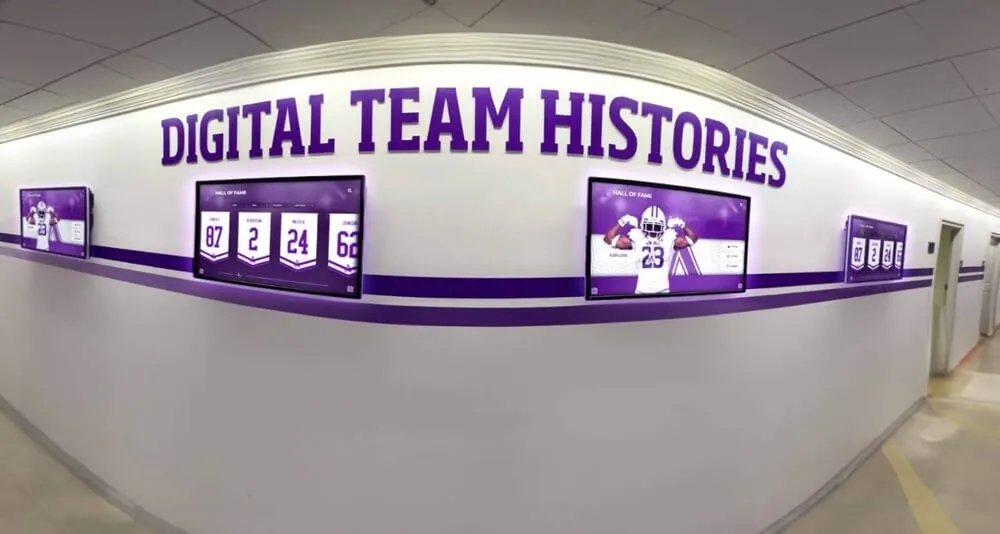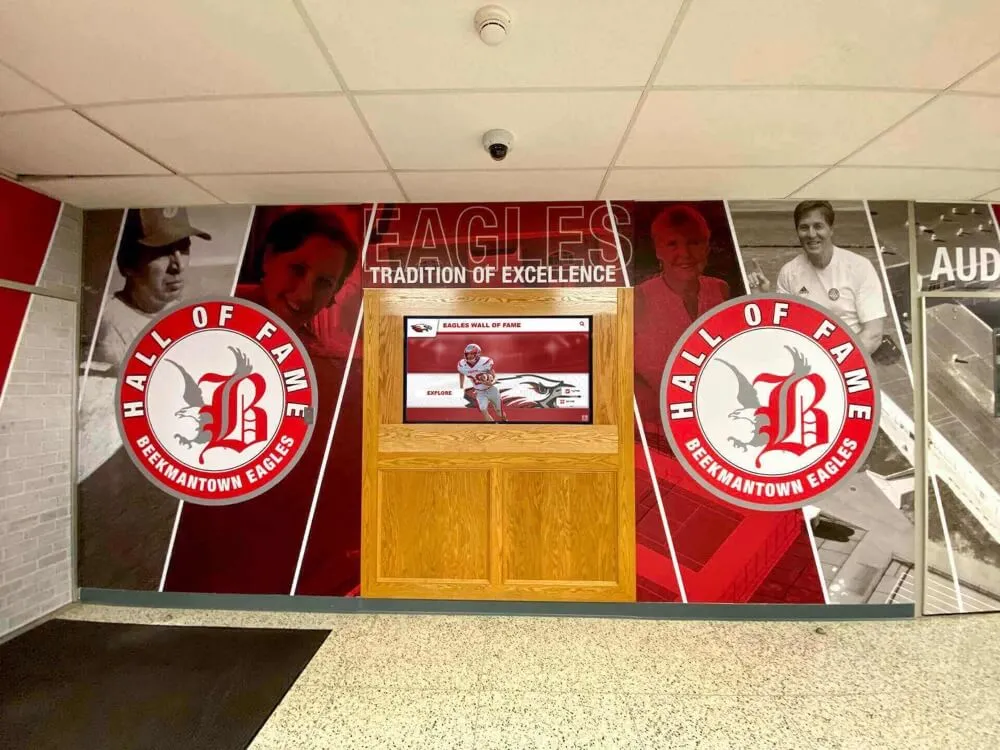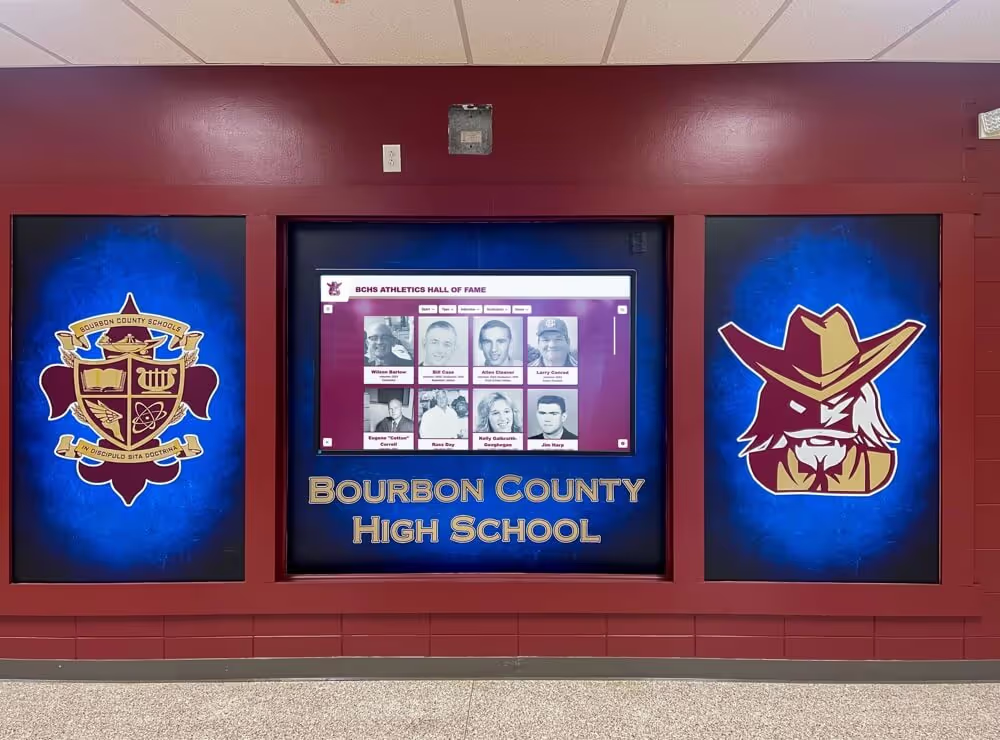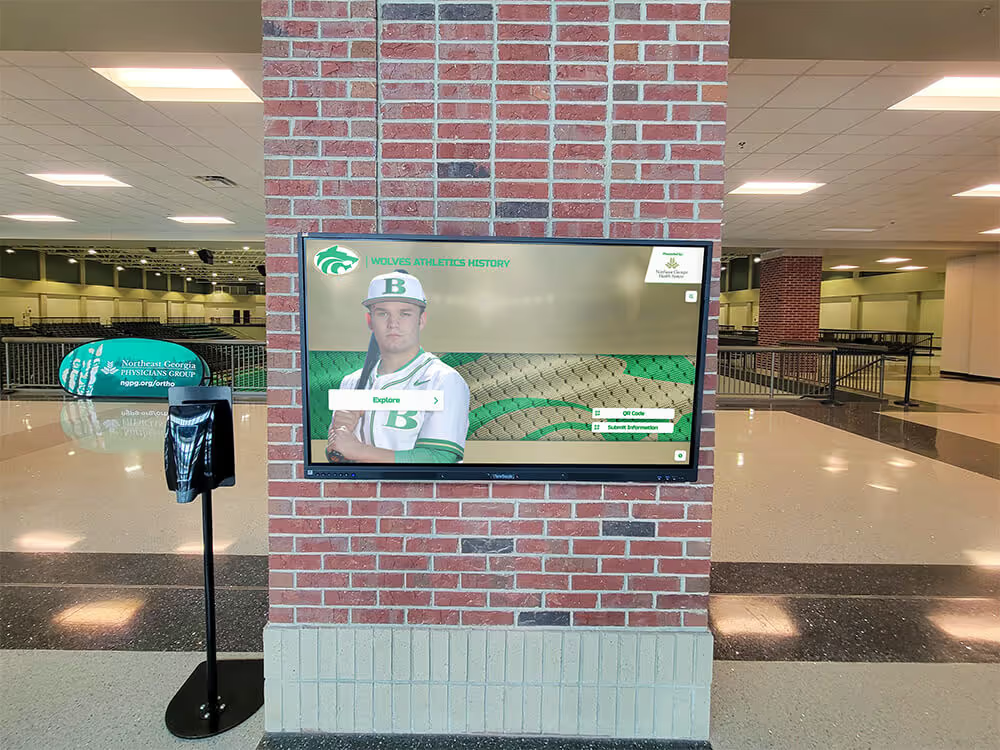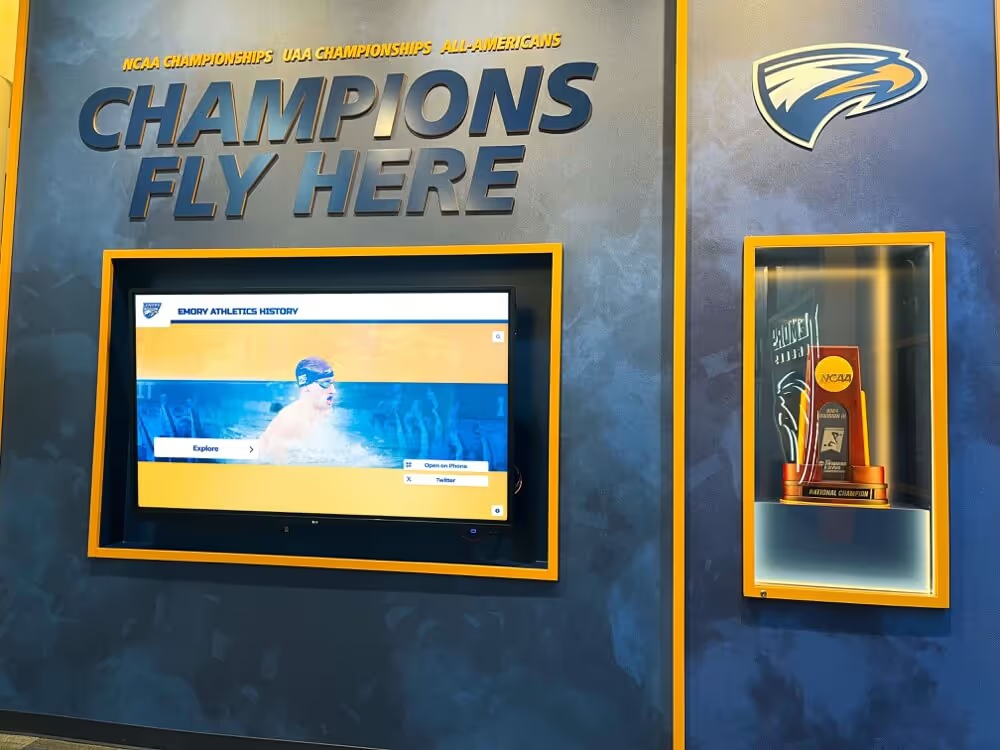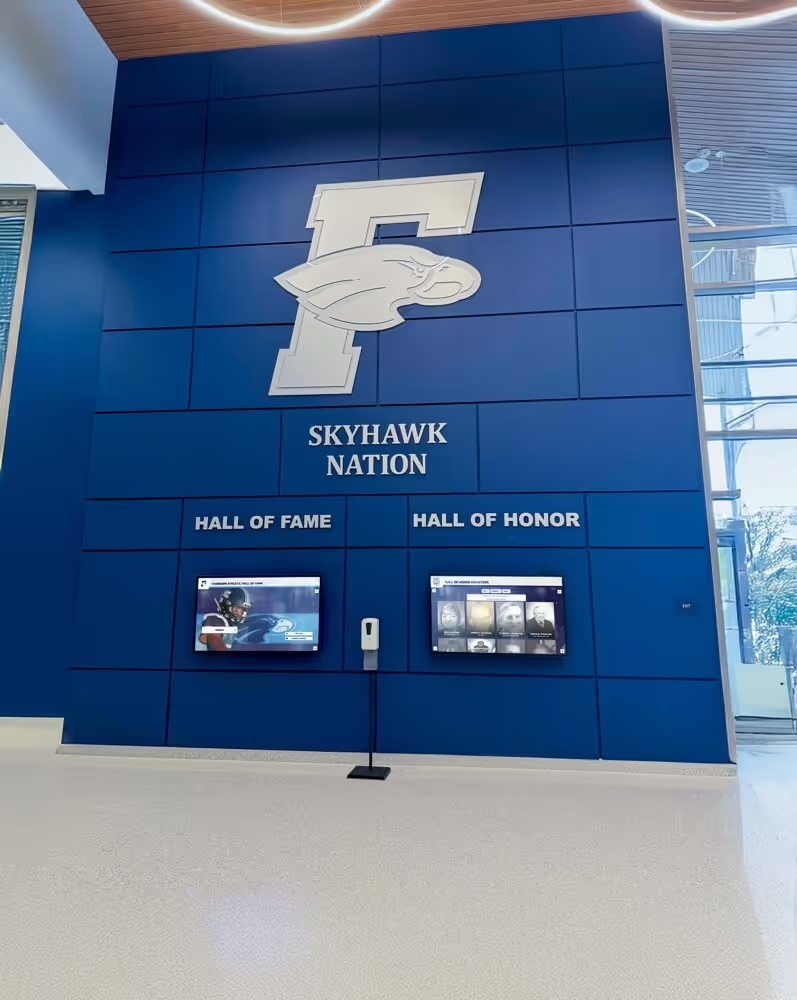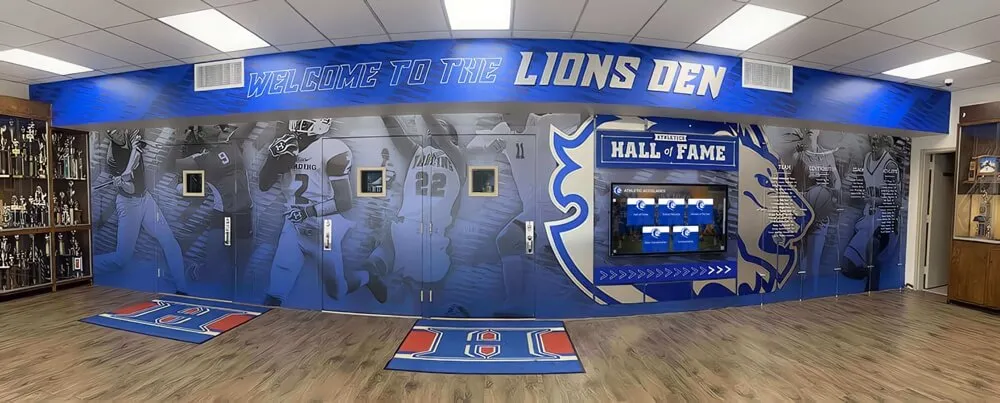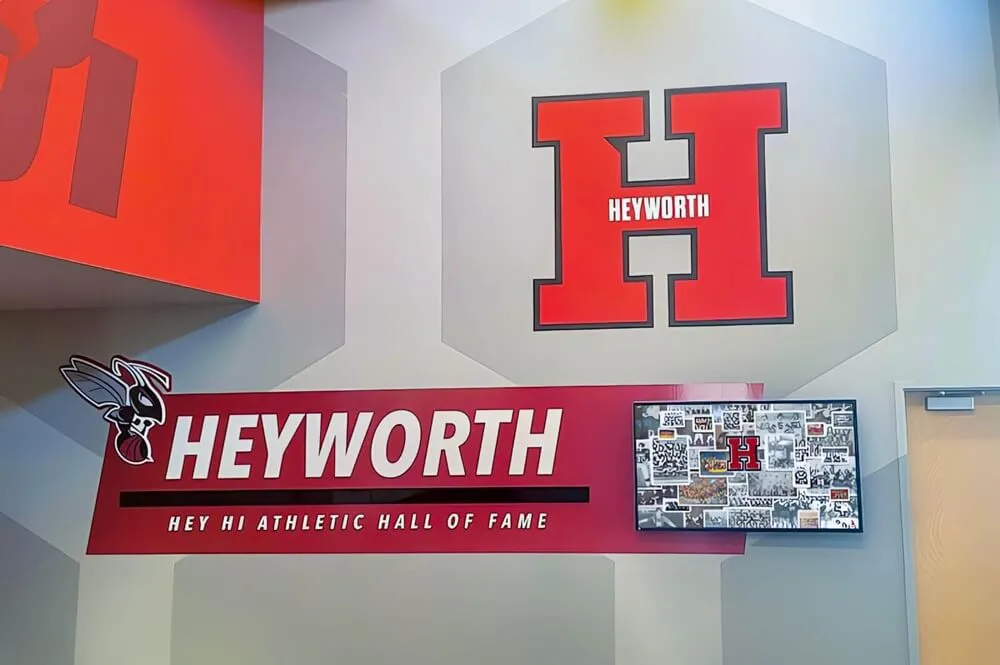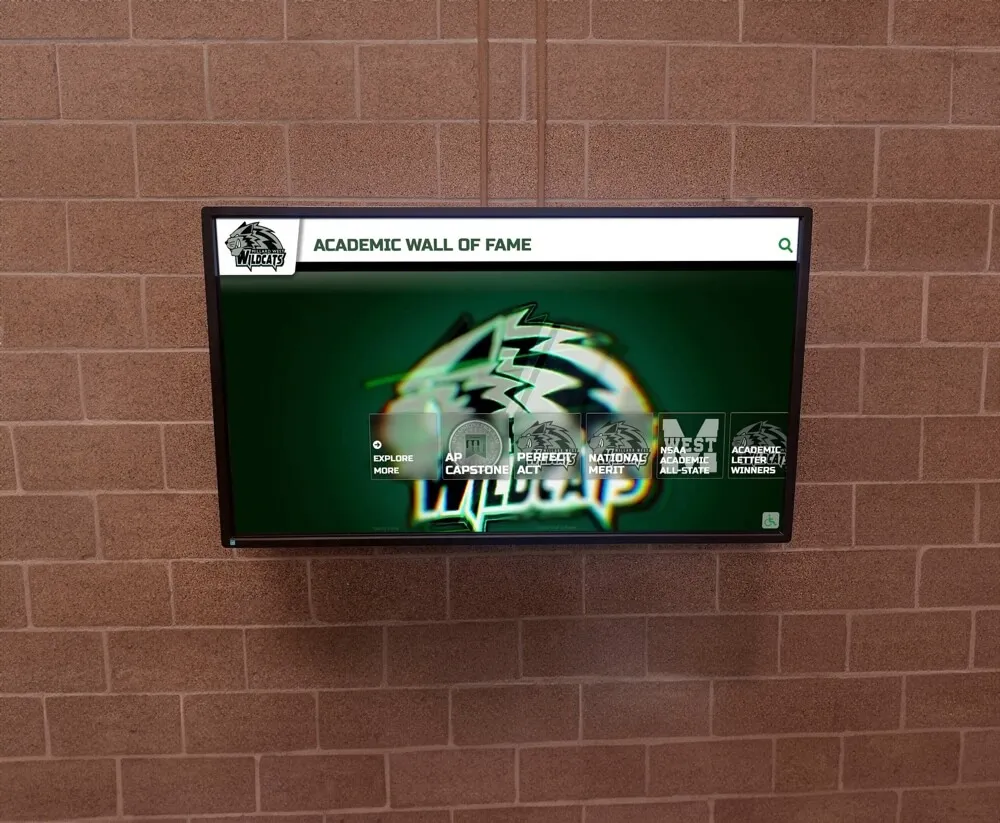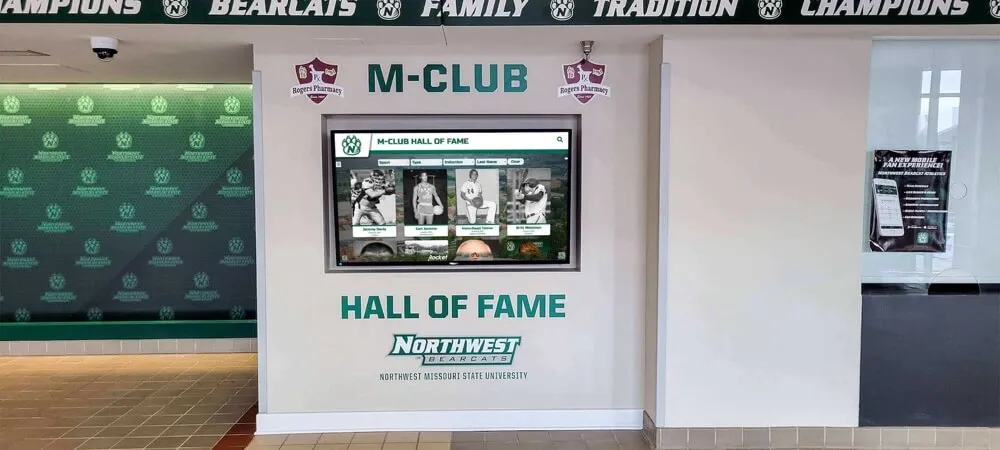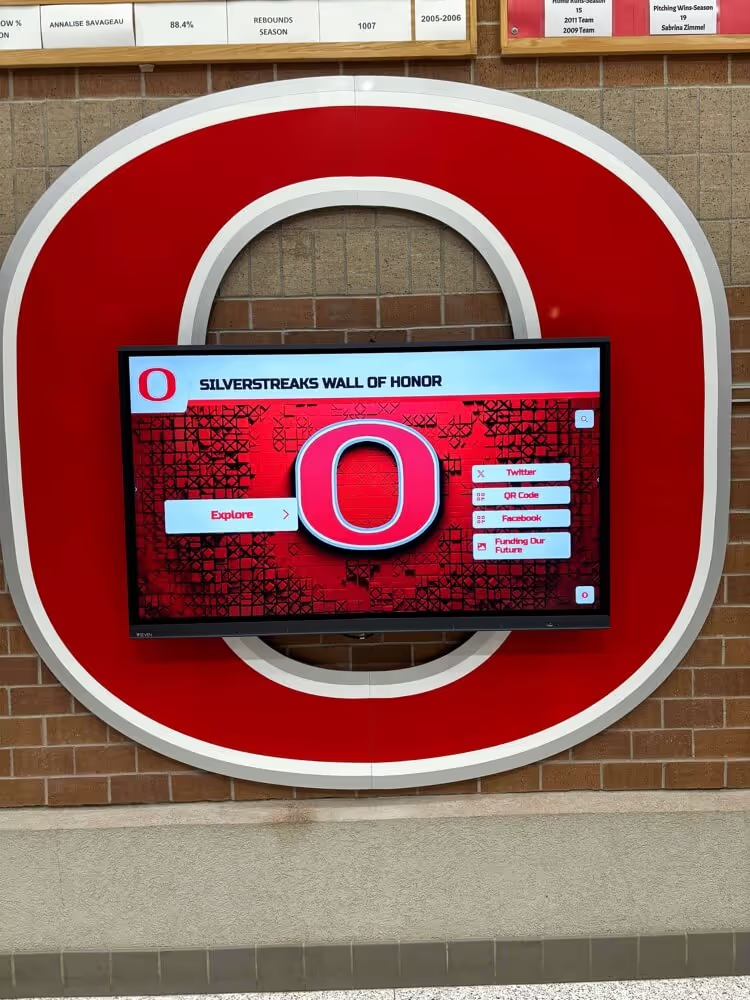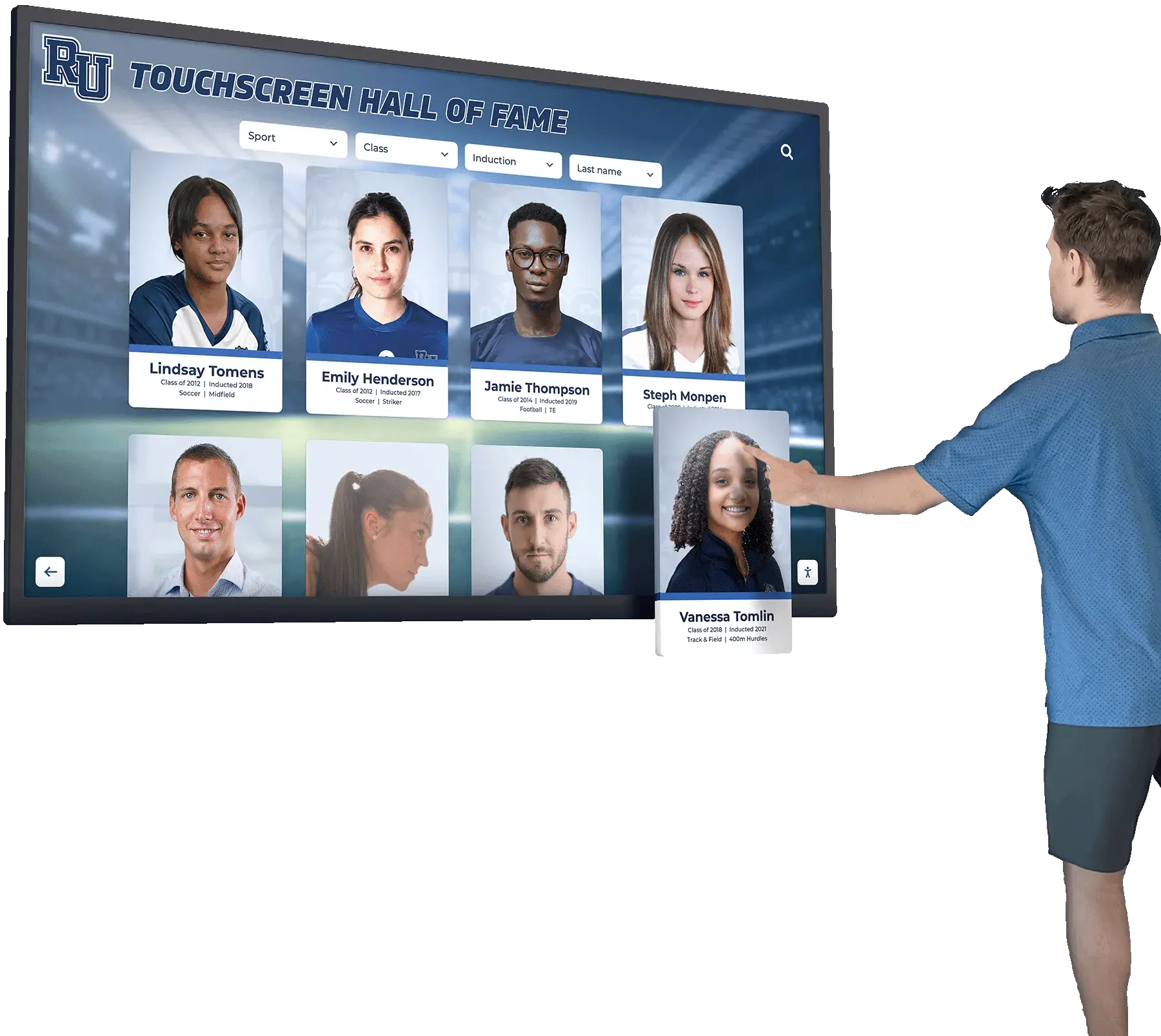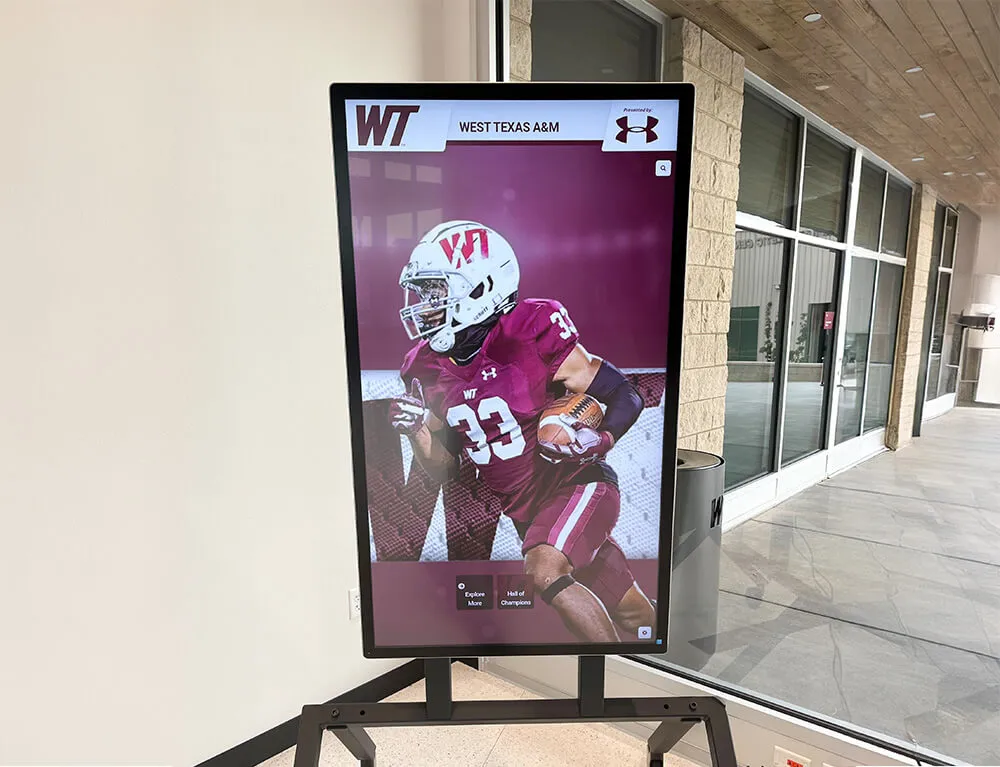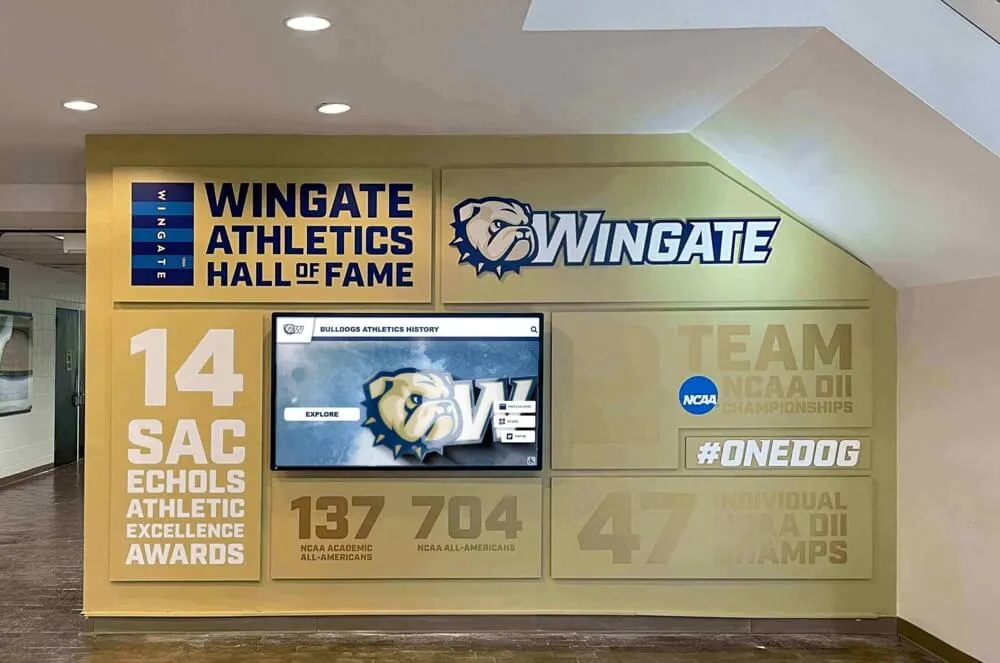Introduction: Why Strategic Planning Makes or Breaks Your Digital Hall of Fame Project
Implementing a digital hall of fame is one of the most impactful investments an organization can make to honor achievements and inspire future excellence. However, without proper strategic planning and budgeting, even the most well-intentioned projects can fall short of expectations, exceed budgets, or fail to achieve stakeholder buy-in.
This comprehensive guide walks you through the complete strategic planning process, from initial needs assessment to ROI calculation, ensuring your digital hall of fame project delivers maximum value while staying within budget and timeline constraints.
Table of Contents
- Pre-Project Assessment: Understanding Your Needs
- Stakeholder Alignment and Buy-In Strategy
- Budget Planning and Cost Analysis
- ROI Calculation and Business Case Development
- Timeline Planning and Project Phases
- Technology Selection Criteria
- Content Strategy and Resource Planning
- Risk Assessment and Mitigation
- Success Metrics and KPI Framework
- Implementation Roadmap
1. Pre-Project Assessment: Understanding Your Needs
Before diving into technology solutions or budget discussions, successful digital hall of fame projects begin with a thorough needs assessment that examines your organization’s unique requirements, constraints, and objectives.
Current Recognition Program Audit
Start by evaluating your existing recognition infrastructure:
Physical Space Analysis:
- Measure available wall space and foot traffic patterns
- Document current recognition displays (plaques, trophies, photos)
- Assess lighting conditions and power outlet availability
- Identify high-visibility locations for optimal placement
Content Inventory:
- Catalog existing honoree information and achievements
- Assess photo and video asset quality and availability
- Document historical records and archived materials
- Identify content gaps that need addressing
Stakeholder Feedback Collection:
- Survey current students/employees about recognition preferences
- Interview alumni and community members about engagement
- Gather input from maintenance and administrative staff
- Document pain points with current recognition systems
Organizational Objectives Definition
Primary Goals Assessment:
- Increase alumni engagement and pride
- Inspire current students/members
- Preserve institutional history and legacy
- Enhance visitor experience and impressions
- Support fundraising and development efforts
Success Criteria Establishment:
- Quantify desired engagement metrics
- Define content update frequency requirements
- Set accessibility and inclusivity standards
- Establish branding and visual consistency needs
- Determine integration requirements with existing systems
2. Stakeholder Alignment and Buy-In Strategy
Successful digital hall of fame projects require support from multiple stakeholders across your organization. Building consensus early prevents delays and ensures project success.
Key Stakeholder Identification
Decision Makers:
- Senior leadership (principals, presidents, executives)
- Board members or trustees
- Department heads and administrators
- Facilities and IT directors
Project Champions:
- Alumni relations coordinators
- Development and fundraising teams
- Marketing and communications staff
- Student affairs and engagement personnel
End Users:
- Current students, employees, or members
- Alumni and community visitors
- Maintenance and support staff
Building Your Business Case
Compelling Value Proposition: Present a clear narrative that connects your digital hall of fame to organizational strategic goals:
“Our digital hall of fame will transform how we celebrate excellence, creating an engaging experience that inspires current students while strengthening alumni connections and supporting our development goals.”
Address Common Concerns:
| Stakeholder Concern | Strategic Response |
|---|---|
| “Traditional displays work fine” | Present engagement data showing 3-5x longer visitor interaction with digital displays |
| “Technology seems complicated” | Demonstrate user-friendly content management systems and ongoing support |
| “Budget constraints” | Show long-term cost savings vs. physical display updates and maintenance |
| “Implementation disruption” | Outline phased rollout plan minimizing operational impact |
3. Budget Planning and Cost Analysis
Effective budget planning requires understanding all project components and their associated costs, from initial implementation through ongoing operations.
Comprehensive Cost Breakdown
Initial Investment Components:
Hardware Costs:
- Touchscreen displays ($3,000-$15,000)
- Mounting systems and enclosures ($500-$2,000)
- Media players and processing units ($800-$2,500)
- Installation and electrical work ($1,000-$5,000)
Software and Licensing:
- Platform licensing ($2,000-$10,000 annually)
- Customization and branding ($1,500-$8,000)
- Content management system setup ($1,000-$4,000)
- Initial training and onboarding ($500-$2,000)
Content Development:
- Photography and videography ($2,000-$8,000)
- Historical content digitization ($1,500-$6,000)
- Professional writing and editing ($1,000-$4,000)
- Graphic design and branding ($1,500-$5,000)
Project Management:
- Internal staff time allocation
- External consultant fees (if applicable)
- Training and change management
- Testing and quality assurance
Ongoing Operational Costs
Annual Operating Expenses:
- Software licensing and updates: $1,200-$6,000
- Content updates and maintenance: $800-$3,000
- Technical support and troubleshooting: $500-$2,500
- Hardware maintenance and warranties: $400-$1,500
Scaling Considerations: Plan for growth by budgeting 15-25% additional capacity for:
- Additional display locations
- Enhanced features and integrations
- Increased content volume and complexity
- Expanded user access and permissions
4. ROI Calculation and Business Case Development
Quantifying the return on investment for your digital hall of fame project strengthens your business case and helps justify budget allocation to stakeholders.
Quantifiable Benefits Analysis
Direct Cost Savings:
Annual Physical Display Updates: $2,000-$8,000
Printing and Installation Labor: $1,500-$4,000
Physical Space Optimization: $500-$3,000 (freed wall space value)
Maintenance and Damage Replacement: $800-$2,500
Total Annual Savings: $4,800-$17,500
Revenue Enhancement Opportunities:
- Alumni giving increases: 15-30% average improvement
- Corporate sponsorship integration: $5,000-$25,000 annually
- Event hosting and facility rental premiums: 10-20% increase
- Brand value and institutional prestige enhancement
ROI Calculation Framework
Basic ROI Formula:
ROI = (Annual Benefits - Annual Costs) / Initial Investment × 100
Example Calculation:
Annual Benefits: $15,000
Annual Costs: $4,000
Initial Investment: $25,000
ROI = ($15,000 - $4,000) / $25,000 × 100 = 44%
Payback Period Analysis: Most digital hall of fame projects achieve full cost recovery within 18-36 months, with ongoing benefits extending well beyond the initial payback period.
Intangible Benefits Valuation
While harder to quantify, these benefits often justify the investment alone:
- Enhanced institutional reputation and brand value
- Increased alumni engagement and loyalty
- Improved recruitment and retention outcomes
- Strengthened community connections and pride
- Historical preservation and legacy protection
5. Timeline Planning and Project Phases
A well-structured timeline ensures project success while managing stakeholder expectations and resource allocation effectively.
Standard Project Timeline (12-16 Weeks)
Phase 1: Planning and Design (Weeks 1-4)
- Stakeholder alignment and requirements gathering
- Content strategy development and asset inventory
- Technology selection and vendor evaluation
- Design mockups and user experience planning
Phase 2: Development and Content Creation (Weeks 5-10)
- Software customization and branding implementation
- Content digitization and profile development
- Hardware procurement and site preparation
- Integration testing and quality assurance
Phase 3: Installation and Launch (Weeks 11-14)
- Hardware installation and system configuration
- Content loading and final testing
- Staff training and user acceptance testing
- Soft launch and feedback collection
Phase 4: Optimization and Rollout (Weeks 15-16)
- Performance monitoring and optimization
- User feedback incorporation and refinements
- Full launch and promotion activities
- Documentation and handover completion
Critical Path Management
Key Dependencies:
- Content collection and digitization often requires the longest lead time
- Hardware procurement and customization can impact installation schedules
- Staff training and change management need adequate preparation time
- Integration with existing systems may require additional technical coordination
6. Technology Selection Criteria
Choosing the right technology platform is crucial for long-term project success and user satisfaction.
Essential Platform Features
User Experience Requirements:
- Intuitive touchscreen navigation for all age groups
- Fast loading times and responsive interface design
- Accessibility compliance (ADA WCAG 2.1 AA standards)
- Mobile-responsive companion web access
Content Management Capabilities:
- User-friendly content editor requiring no technical skills
- Bulk upload and batch editing functionality
- Version control and content approval workflows
- Multi-user permissions and role-based access
Technical Infrastructure:
- Cloud-based hosting with 99.9% uptime guarantee
- Automatic software updates and security patches
- Robust backup systems and disaster recovery
- Scalable architecture supporting growth
Vendor Evaluation Framework
Assessment Criteria Checklist:
| Criteria | Weight | Evaluation Questions |
|---|---|---|
| Feature Completeness | 25% | Does the platform meet all functional requirements? |
| Ease of Use | 20% | Can non-technical staff manage content effectively? |
| Support Quality | 20% | What level of ongoing support and training is provided? |
| Scalability | 15% | Can the system grow with organizational needs? |
| Cost Structure | 10% | Is the pricing model sustainable long-term? |
| Integration Capabilities | 10% | How well does it connect with existing systems? |
Solutions like Rocket Alumni Solutions score highly across all criteria, offering comprehensive digital hall of fame platforms designed specifically for educational and organizational recognition needs.
7. Content Strategy and Resource Planning
A well-planned content strategy ensures your digital hall of fame launches with compelling, comprehensive information while establishing sustainable processes for ongoing updates.
Content Collection and Organization
Honoree Information Requirements:
- Biographical details and achievements
- High-quality photographs (historical and contemporary)
- Video content and testimonials
- Supporting documents and artifacts
- Social media integration and current updates
Content Quality Standards:
- Minimum 300 DPI resolution for photographs
- Professional writing and editing review
- Consistent formatting and style guidelines
- Accuracy verification and fact-checking
- Accessibility compliance for all content
Resource Allocation Planning
Internal Team Responsibilities:
Content Development Team:
- Alumni relations coordinator (40% time allocation)
- Marketing/communications staff (25% time allocation)
- Administrative assistant (30% time allocation)
- IT support personnel (15% time allocation)
External Resource Needs:
- Professional photographer for portrait sessions
- Videographer for testimonial content
- Graphic designer for branded elements
- Technical writer for content editing
Content Collection Timeline:
- Historical content digitization: 4-6 weeks
- New content creation and interviews: 3-4 weeks
- Professional photography sessions: 2-3 weeks
- Content review and approval: 2-3 weeks
8. Risk Assessment and Mitigation
Identifying potential risks early allows for proactive mitigation strategies that keep your project on track.
Common Project Risks
Technical Risks:
- Hardware compatibility and performance issues
- Software bugs and integration challenges
- Data migration and content transfer problems
- Network connectivity and security concerns
Organizational Risks:
- Stakeholder resistance to change
- Insufficient content or poor quality materials
- Staff turnover during project implementation
- Budget constraints or scope creep
External Risks:
- Vendor delays or support issues
- Technology platform changes or discontinuation
- Economic factors affecting budget approval
- Regulatory or compliance requirement changes
Risk Mitigation Strategies
Proactive Risk Management:
| Risk Category | Mitigation Strategy |
|---|---|
| Technical | Comprehensive testing phases and backup plans |
| Content | Early inventory and quality assessment |
| Stakeholder | Regular communication and involvement |
| Budget | Contingency planning and phased implementation |
| Timeline | Buffer time and flexible milestone scheduling |
9. Success Metrics and KPI Framework
Establishing clear success metrics from the project outset enables effective performance monitoring and demonstrates value to stakeholders.
Engagement Metrics
Primary KPIs:
- Average session duration (target: 3-5 minutes)
- Number of daily interactions (baseline establishment)
- Content views and popular sections
- Return visitor percentage
- Mobile access statistics
Secondary KPIs:
- Search query frequency and terms
- Social sharing and external referrals
- Feedback ratings and comments
- Technical performance metrics (load times, uptime)
- Support request frequency and resolution
Organizational Impact Metrics
Alumni Relations:
- Event attendance increases
- Alumni directory updates and participation
- Donation activity correlation
- Communication engagement improvements
Community Engagement:
- Visitor feedback and satisfaction scores
- Media coverage and external recognition
- Website traffic referrals from digital display
- Social media mentions and engagement
Measurement Implementation
Analytics Setup:
- Comprehensive tracking system implementation
- Regular reporting schedules and stakeholder updates
- Baseline establishment and benchmark setting
- Quarterly performance reviews and optimization
10. Implementation Roadmap
Your implementation roadmap serves as the master plan coordinating all project elements from initiation through ongoing operations.
Pre-Implementation Checklist
Organizational Readiness:
- Stakeholder alignment and formal approval
- Budget allocation and financial approvals
- Project team assignment and training
- Vendor selection and contract execution
Technical Preparation:
- Site survey and installation planning
- Network infrastructure assessment
- Hardware specifications and procurement
- Software customization requirements documentation
Content Readiness:
- Asset inventory and digitization completion
- Content creation and quality review
- Approval workflows and sign-off processes
- Launch content scheduling and prioritization
Launch and Optimization Phase
Soft Launch Activities:
- Limited user group testing and feedback collection
- Performance monitoring and technical optimization
- Content refinement based on user behavior
- Staff training completion and support preparation
Full Launch Execution:
- Comprehensive promotion and communication campaign
- Stakeholder celebration and recognition events
- Media engagement and external publicity
- User onboarding and engagement initiatives
Post-Launch Optimization:
- Performance data analysis and insights gathering
- User feedback incorporation and system improvements
- Content expansion and regular updates
- Success metric reporting and stakeholder communication
Frequently Asked Questions
How long should we expect the planning phase to take?
What's the most common reason digital hall of fame projects exceed budget?
Should we start with one display or implement multiple locations simultaneously?
How do we ensure our digital hall of fame stays current and engaging?
What's the typical ROI timeline for these projects?
Conclusion: Turn Strategic Planning Into Recognition Excellence
A successful digital hall of fame project begins with thorough strategic planning that aligns organizational goals, stakeholder needs, and technical capabilities. By following this comprehensive guide, you’ll build a strong foundation for a recognition system that honors achievements while inspiring future excellence.
The investment in strategic planning pays dividends throughout the project lifecycle, reducing implementation risks, ensuring stakeholder satisfaction, and maximizing long-term value. Organizations that prioritize strategic planning report 40% higher project success rates and significantly better user engagement outcomes.
Ready to begin your digital hall of fame journey? Rocket Alumni Solutions provides comprehensive planning support and proven technology platforms designed specifically for recognition excellence. Our team guides you through every step of the strategic planning process, ensuring your project delivers maximum impact within budget and timeline constraints.
Contact our strategic planning team to schedule a consultation and begin transforming how your organization celebrates excellence.





